Tell us what you think about this “Wisconsin Life” episode. Take the survey!
– The following program is a PBS Wisconsin Original Production.
– Coming up on Wisconsin Life… [shimmery music] meet a group carving out space at the skate park, [skateboard clammers] a researcher diving headfirst into bear dens, [bear coos] an artist telling a story with his paintbrush, and a man restoring a historic steamboat.
[torch sizzling] That’s all ahead on Wisconsin Life.
[steamboat whistle] [uplifting guitars, strings, piano, and drums] – Announcer: Funding for Wisconsin Life is provided by the Wooden Nickel Fund, Mary and Lowell Peterson, the A.C.V.
and Mary Elston Family, the Obrodovich Family Foundation, the Stanley J. Cottrill Fund, Alliant Energy, UW Health, donors to the Focus Fund for Wisconsin Programs, and Friends of PBS Wisconsin.
[birds chirping] [cheerful, twangy music] – Hello, and welcome to Wisconsin Life.
I’m your host, Angela Fitzgerald.
I’m spreading my wings to explore the Butterfly Gardens of Wisconsin, a non-profit preserve celebrating these vibrant insects.
Located in Appleton, the seven-acre complex offers visitors a serene backdrop to learn about the pollinators and the native plants they need to survive.
[folksy music] The garden was started by husband-and-wife team Jack and Marty Voight, who transformed their land into a pollinator’s paradise.
Planting native plants to preserve the 40 different butterfly species native to Outagamie County.
The butterfly house offers an up-close encounter with the winged beauties.
There are also plenty of ways to learn about the importance of pollinators to our ecosystem.
We’ll explore more later on, but now, let’s fly into our first story… [shimmery music] …as we head to Spooner to join a researcher diving headfirst into bear dens.
It’s estimated Wisconsin has 24,000 black bears.
– Jennifer Price Tack: The population is expanding south, but the core bear range is still in the northern half of the state.
– Jennifer Price Tack is a scientist with the Department of Natural Resources.
– Jennifer Price Tack: I specifically work with bear, elk, and wolves.
– On this day, Jen and her team will investigate a bear den near Spooner.
[car door thunks] – Number one objective today is always safety.
So, that’s people safety and bear safety.
[click, leaves crackling, bear sound] – She was jaw popping at Trevor when he went in for the injection.
So, she was a pretty awake bear.
– It’s early March.
An unusually warm winter is creating a bit more risk.
– We are seeing them more awake this year than we did in the past few years.
– Jen takes the lead with dart gun in hand to immobilize the bear.
– We had a nice line of sight, so we were able to get within six yards or so.
[leaves crackling] [bear exhaling audibly] [tranquilizer gun fires] They’re still a little bit more lethargic.
We wouldn’t try this, you know, when they were out of torpor.
– Torpor occurs in late winter when bears can be awake, but not fully active.
– Man whispers: Come here, little guy.
[mild distress sounds] Come here, buddy.
All right.
– Jen handles these baby bears with a mother’s touch.
– Jen: I think there’s something particularly special about this project right now.
I have a seven-and-a-half-month-old.
Seeing the instincts of a mother bear, I can kind of relate to that now, having my own cub at home.
– And she protects these baby bears as if they’re her own.
– Jen: Cubs need to go into jackets.
It’s really important that they stay warm while we’re working with Mom.
I know it’s a hard job.
[laughter] We’re asking a lot of you today.
[Jen chuckles] – The baby bears also get a checkup.
[cub squeals, huffs] – Jen: We’ll get a weight on them.
[cub squeals] – Trevor: 2.55.
– Jen: 2.55 kilograms, okay.
We collect hair samples, and that’s really important for us.
[cub screams] And they can analyze and better understand what those bear are eating.
– The screening on Mama Bear is also going well.
– We put the collar on her so that we can then track her over the next several years.
– Her current research involves one of the largest black bear studies in state history.
– We’re trying to get a total of a hundred bears over time collared.
Specifically, we’re looking at cub survival, litter size, and litter frequency.
[whispering] She’s a good size.
– Trevor: Yeah, she’s a big girl.
– We’ll just keep an eye on her, and then, next year, we’ll find her den and survey her again, see how many of those cubs are still around.
[playful melody] – Finding those dens can be the hardest part.
– Matt Ostertag: I heard a faint sound.
It sounded like a rabbit in distress, and it was very close to me.
[high-pitched shrieking] – Matt Ostertag is a Washburn County landowner who first discovered this den.
– I looked around, and about 3 feet away, it was a bear laying there, and what I was hearing had to have been a cub.
– Matt alerted the DNR so they could survey the den.
– There was so much that I had no idea went into bear management, and seeing it firsthand was just phenomenal.
– Jen: It’s been fantastic and very encouraging how many people are supportive of this project and are really helping us out.
The whole goal is to help people live better with bears.
It will improve our ability to, you know, sustain healthy, happy bear populations into the future.
[cub squeals] [whispering] Jen: So, this is where we start backing off.
– When it comes to wildlife management in Wisconsin… [whistling] …Jen will do whatever it takes.
…even if it’s headfirst into a bear den.
[bear screeching] – And one of my objectives personally that makes me want to come to work every day is, “Do I feel like I’m making a difference?”
And, in this position, I’m very fortunate that I get to do that.
– Angela: And to survey two dens in one day… [acoustic guitar] …that’s a great day for a bear researcher.
[playful, energetic music] – Jen: I feel like every day is pretty great for a bear researcher.
I have a wonderful job.
I have the best team.
I love this project.
[door thuds] Jen whispering: Thanks, Mama.
Thanks for being a research bear.
[shimmery music] – Now, we’re off to Madison to catch up with a group carving out space at the skate park.
[skateboard soaring] [punchy rock music] – Somali Wilson: You’re so light on your feet.
There’s nothing else but you and the ramps, [wheels coasting] or the ledges, the concrete.
Just you and your wheels.
[moody, gritty hard rock] Oh, yeah Oh, oh Oh, yeah – Leon C.: It was called “Lady Skate Night” at first.
Transmasc people, like myself, were like, “Is this for me?”
So, we eventually got to the name “Fem and Queer Skate Night.”
[edgy, energetic rock] [cheering] – Timothea Stinnett: The group, to me, first and foremost, means feminism and empowerment.
And then, after that, I would say it means having fun.
[sassy hard rock] [wheels gliding] – Leon C.: The hardest part about skating is when you’re hurt, and you can’t skate… [laughs] ‘cuz it’s torture.
[skateboard thrumming] – OH – Somali Wilson: Whoo!
Try that again, right?!
Oh, my gosh!
You will totally screw up in skating.
Even now, I went skating on Friday night, and I have, like, three different bruises on me [bubbles popping] and I’m still kind of sore from it cuz some of the crashes I took, but it was fun, you know.
[skateboard crashing] [wheels knocking] – Timothea Stinnett: I did hit a big rock, flipped over it.
My mom thought I broke my arm.
I didn’t.
That’s later in life.
[cartoon sound effect] – Leon C.: It’s really about the sesh, you know, with your friends.
And suddenly, your friend’s trying a trick, and you’re cheering for them, and then, they land it.
– Yoooooooooo!!!
– Leon C.: And you’re, like, smacking your board on the ground, like, “Yeah,” cheering for them.
And then, somebody’s like, “You got to back them up.”
– Timothea Stinnett: You put in all this time and this effort and this fear into trying to do something that your body just, like, can’t figure out.
[wheels clacking] And then, when your body does finally figure it out, it’s like, “Oh, my God, I’m capable of so many things.”
[pumped-up rock music, skateboard clattering] [metallic echo] – Somali Wilson: It can be so intimidating to go to the skate park, especially while you’re still learning.
And it can feel really lonely at times.
And so, you kind of feel like you’re in the way.
You’re going to bother somebody.
You’re doing this; you’re doing that.
You’re nitpicking every single thing that you’re doing instead of just being, like, showing up and taking up the space that you’re allowed to take while you’re there.
– Timothea Stinnett: To me, it’s totally about smashing patriarchy.
We’re not set up, growing up to be like, “Yeah, you go, “and you do these physical things.
“Go get on a four-wheeler.
Go play in some mud.
Go skate.”
– Leon C.: Don’t let anyone ever tell you that you can’t skate or do whatever your heart desires.
[female vocals, synthesizer, and electronic drums] [dreamy vocals] [warm, mellow synth] – Timothea Stinnett: You know, there’s a lot of young women and queer kids who look around and don’t see anyone who they can relate to.
And so, I think community is where we can kind of pull that support that isn’t familial.
[chatter, warm laughter] – Somali Wilson: Sometimes, it’s kind of overwhelming and emotional sometimes to, like, think about, like, how much these guys, like, mean to me.
To have a skate park and have an event where I go, and there’s people that are going to welcome me and are like-minded.
And I can’t believe how much fun I have sometimes, like, while I’m there.
It’s just like two-to-four hours straight of just, like, laughing and giggling, and, like, screaming and cheering for each other.
And I wouldn’t want to give that up for the world.
[warm, mellow synth] [skates clacking] [shimmery music] – I’m gliding through the Butterfly Gardens of Wisconsin, discovering the importance of pollinators and native plants to our state.
I first landed at the entrance of the butterfly maze to chat with Co-Founder Marty Voight about how this enchanting property came to be.
– Marty Voight: When we first bought this property in the ’80s, we were going to use it for botanical gardens, and the site assessor looked at it and told us that we had 16 different types of butterflies that he saw at that moment.
They would not exist here anymore if we had a botanical gardens, so then he decided that we would turn it into a butterfly gardens.
– Angela: So, really honoring the species that was already here?
– Yes.
– Helping them to stay versus displacing.
– Well, we also have 50 different species of plants.
To me, the most important part about the gardens is that people realize that birds, bees, butterflies, and bats– but mostly bees– create over a third of the food we eat.
So, it’s important to keep the population up and to keep them healthy.
– Angela: Thank you for sharing.
I did not realize how much bees contributed to so many things that we appreciate.
– Yes.
– So that is very, very important.
[laughs] – But there’s lots to see and do here and to help you appreciate nature.
– Angela: Including visiting the hoop house, where I met up with Marty’s husband and master gardener, Jack Voight.
– Jack Voight: The butterfly hoop house is a place where people can come and visit and enjoy interaction with various kinds of butterflies.
– And so, it looks like what’s in front of us are the monarch butterflies.
– Jack: They’re nectaring on a beautiful plant, which is the native plant of this area, the red swamp milkweed.
And so, they’re getting nectar from the flower right now.
And so, they’re getting primed to also lay their eggs eventually on the underside of the leaf.
– And you mentioned this is a space in which people can interact with the butterflies.
– Very true.
– What does that look like?
– We have– we give everybody a Gator stick, which is Gatorade on a Q-tip, and we put it on the front of the butterfly, like this.
– You ready to go?
– Huh?
I feel it.
[Jack laughing] – The Butterfly Gardens of Wisconsin offers a place to learn, interact, and get an up-close look at pollinators and butterflies in our state.
[birds chirping] [shimmery music] Now, we meet an artist in Madison using brush strokes to paint a story.
[upbeat music] [joyful jazz] – Jerry Jordan: I like that feeling of working with the paint.
It’s almost therapeutic ’cause you’re mixing the paint, and you’re taking your pallet knife, and you’re mixing.
You’re kind of lost in what you’re doing.
It’s like a meditation.
I always wanted to be an artist, but society and everyone’s telling you that “You can’t be an artist.
You’re going to be a starving artist.”
That sort of thing.
I decided about 12 years ago that I was going to pursue this with everything I have: to put in the time and to learn the craft of painting.
My name is Jerry Jordan, and I am a painter.
[intriguing jazz vibe] Most of my subject matter is of the Black experience, and that’s because I’m Black, and that has been my experience.
And my experiences and my community’s experiences have not really been seen in the art world.
That’s actually my wife in the portrait.
And wearing the armor, just the armor that you need to go out into the world every day, that we all wear every day.
You get up, you put on your armor, your protection, to go out into the world.
Well, as an African American, you need that even more.
And she’s in the water.
The water has memory.
A lot of societies or cultures consider water a source of memory, the memory and healing.
[jazz strings] A lot of the paintings are in… situated in fields, open fields, broad open fields.
To me, that symbolizes opportunity and freedom and being free to be who you want to be.
And that also includes sometimes fantasy.
Things are, you know, it doesn’t necessarily have to be real.
Just like a song… You listen to the lyrics of a lot of songs.
It doesn’t really make a lot of sense, but, you know, you get that feeling.
The feeling comes across, and you know you love the song.
And that’s how I look at my paintings.
[upbeat jazz] As an illustrator, I’m one of a few that are working in oil.
[jazz guitar, walking bass, and organ] I’ve recently finished a book called Ida B.
Wells Marches for the Vote.
The book is about Ida B.
Wells and her journey in the suffragette movement.
[light-hearted jazz] Some didn’t want the African American women to be in it at all.
But the Black suffragettes refused to go away.
They were determined to be a part of it.
On the next book, I just finished up the artwork for it.
I’m really excited.
It is The Unstoppable John Lewis.
Doing these historical children’s books are important because when I was a kid, I was not exposed to this.
I knew nothing about African American history.
So, when I’m doing these paintings, I want the little kid, regardless of color, to look at it, get lost in the book, and, of course, they’re learning as they go.
This book means a lot to me because it validated that I was going down the right path of pursuing painting and really working at it and honing my craft.
So, this can be done.
This can actually be done.
Because if you put in the time, you will be able to succeed.
[fun, quirky jazz] [shimmery music] For our last story, we travel to La Crosse, where the restoration of a historic steamboat is underway.
The history of La Crosse is forged by the waterways that traverse Western Wisconsin.
– Ellis Inman: You get out here on the upper Mississippi River, you’ve got the towering bluffs faced right up to the river and all the wildlife.
– Ellis Inman knows this river well.
– This is my dad, Bo Inman.
My father was captain of the Julia Belle in the ’90s.
[steam whistle warbles] – The Julia Belle Swain is a paddle-wheeled steamboat that first cruised the Illinois River in Peoria.
– Ellis: Everybody in Peoria was really sad to see her go.
[steam whistle] – The paddle-wheeler arrived in La Crosse in 1995.
With its history of steamboat building, La Crosse would be a perfect port for this famous queen of the river.
[whistle blows, paddle whisks] – Ellis: It’s pretty amazing.
It’s been in major motion pictures, had albums and songs written about it.
– This steamboat is also where Ellis felt at home on the water.
– Ellis: I spent lots of time on that boat as a child.
I might have been, at one point in time, the only kid on the Mississippi River working on a steamboat.
[blowing off steam] I like to joke that the Julia Belle Swain was my first love.
[steam whistle] – But not even love could save the Julia Belle.
– Definitely, it hurt a lot of people.
– In 2008, her paddlewheel churned upriver for the very last time.
– Ellis: It’s hard to believe how many people it’s touched.
And that’s exactly why everybody was so disappointed and why they were so sad and hurt by the fact that the Julia Belle shuttered and was laid up.
– It remained dormant until the Julia Belle Swain Foundation set out to restore and preserve this piece of La Crosse history.
– Ellis: We’re very lucky that the Julia Belle still even floats after the last several years of neglect.
Anything that’s built to move and built to run gets destroyed by just sitting.
– Then, just like the muddy Mississippi River, those renovation plans got muddied, millions of dollars spent, and mounting costs sank the project.
– Ellis: It was a lot for people to deal with; it really was.
A foundation dissolving and not being able to finish the project.
[calliope music] The sadness, the fact that you’ll never get to experience that again.
– But Old Man River has a way of never giving up and always pushing forward.
– Ellis: The river brings lots of people together for lots of reasons.
[torch sparking] I had not expected to come back to Wisconsin and work on the boat.
[circular saw buzzes] – Angela: This time, new owners would put Ellis at the helm of restoration efforts.
– I guess I have never really felt any excitement quite like that… stepping back on the boat, knowing that we’re breathing life back into this project.
– It is also a chance to revitalize the historic riverboat his dad once captained.
– I guess coming back, I kind of feel like a kid again.
[chuckles] I feel like I’m where I should be.
– Ellis would not only work on the Julia Belle, but also the Spirit of Peoria riverboat restoration.
– Ellis: I like to call ’em stepsisters.
[tool buzzing] Obviously, from Peoria, Illinois, the boat replaced the Julia Belle Swain back in the ’80s.
[ratchet clicking] Every day is exciting; every day is something new.
– By this point, the Julia Belle hadn’t rolled on the river in 14 years.
– Just sitting is bad for a boat.
It’s killed some of the greatest boats that we’ve ever had.
– Despite past attempts at preservation, years of standing idle proved unkind to the steamboat.
– Ellis: Once she got here and we got into the project, we realized that there were a lot of changes that needed to be made.
We dove right in, torn her apart.
– Torn apart and put back together with a few more bells and whistles.
– Don’t want to pull any punches here.
She won’t be the same as she was.
Once we’re finished with her, she’s going to be very different.
At her core, at her heart, she’ll still be a steamboat.
– The one thing that won’t change: her 110-year-old steam engines.
– Ellis: They’ve had more than a million miles logged on them.
I’m looking forward to the steam engines [key ring clinking] jumping back into life.
The sounds, the sights, the smells, it’s all part of it.
It’s going to be a lot of fun.
It’ll be definitely an experience.
– For La Crosse, it’s more bittersweet.
– It was quite emotional.
– In December of 2023, a barge escorted the stepsisters downriver as the city bid farewell to the riverboats.
– There’s only five Sternwell steamboats left.
The bigger picture is that we’re working on this so that we can inspire another generation of steamboaters.
– Their makeover will continue, and eventually, both will have a new riverfront home, but not in La Crosse.
– When we get to Nashville, we’ll be a wedding destination of the South.
It’s already a huge wedding destination, but once this boat’s there, we’ll be offering fully curated weddings.
[calliope] She’ll still be America’s finest example of a Sternwell steamboat, in my opinion.
– As for Ellis, he has no intention of ever leaving his first love.
I don’t know that I’ll ever say goodbye again.
[cheerful calliope] I’m looking forward to a long future, either on the Julia Belle or at least close enough that I can hear her whistle.
[whistle blowing triumphantly, Ellis laughs] [cheers and applause] [shimmery music] – We’ve taken flight through the Butterfly Gardens of Wisconsin and shared stories from our state’s rich resources.
Find more at WisconsinLife.org or connect via email at [email protected].
I’m your host, Angela Fitzgerald, and this is our Wisconsin Life.
Bye!
[uplifting guitars, strings, piano, and drums] [birds chirping] – Announcer: Funding for Wisconsin Life is provided by the Wooden Nickel Fund, Mary and Lowell Peterson, the A.C.V.
and Mary Elston Family, the Obrodovich Family Foundation, the Stanley J. Cottrill Fund, Alliant Energy, UW Health, donors to the Focus Fund for Wisconsin Programs and Friends of PBS Wisconsin.
Search Episodes
Related Stories from PBS Wisconsin's Blog

Donate to sign up. Activate and sign in to Passport. It's that easy to help PBS Wisconsin serve your community through media that educates, inspires, and entertains.
Make your membership gift today
Only for new users: Activate Passport using your code or email address
Already a member?
Look up my account
Need some help? Go to FAQ or visit PBS Passport Help
Need help accessing PBS Wisconsin anywhere?

Online Access | Platform & Device Access | Cable or Satellite Access | Over-The-Air Access
Visit Access Guide
Need help accessing PBS Wisconsin anywhere?

Visit Our
Live TV Access Guide
Online AccessPlatform & Device Access
Cable or Satellite Access
Over-The-Air Access
Visit Access Guide
 Passport
Passport








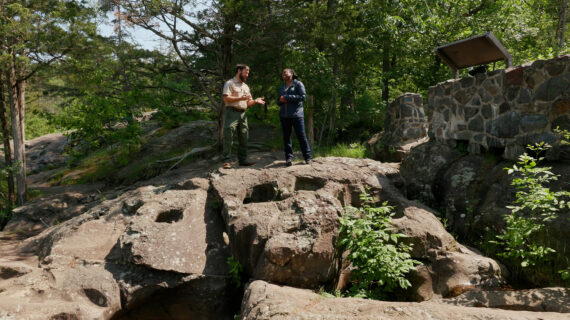
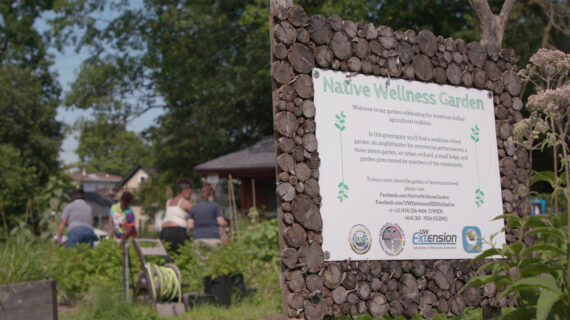
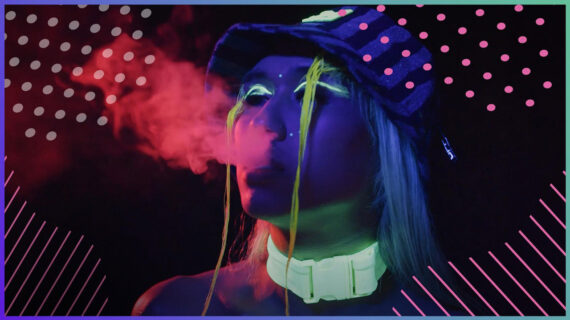
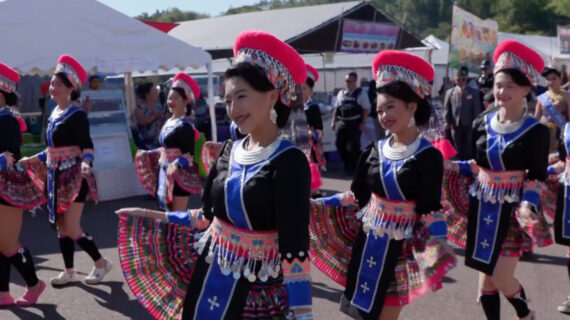
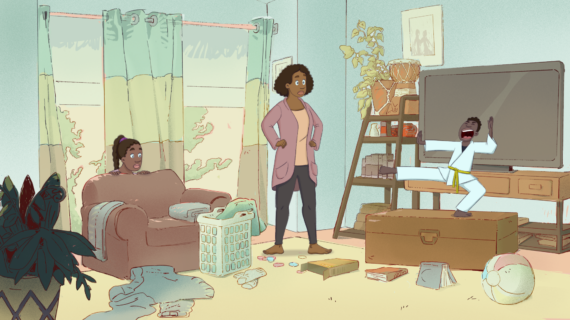
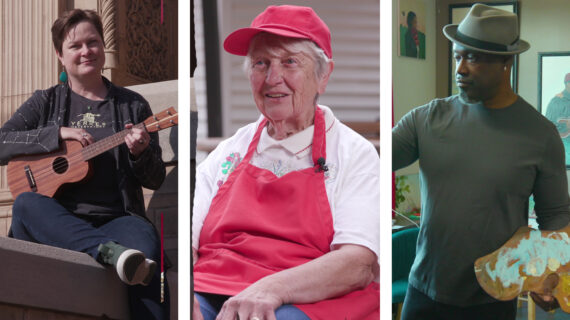
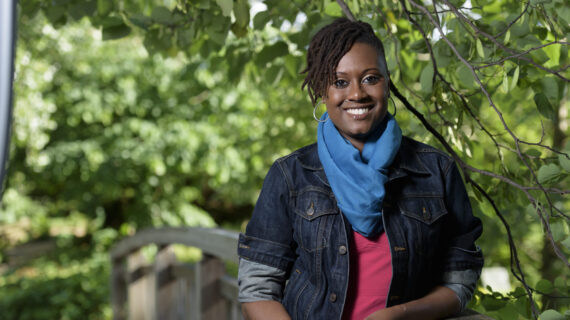
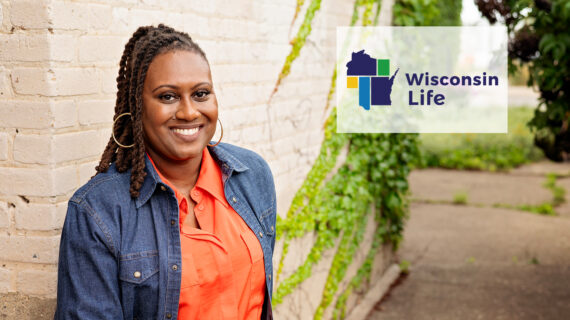
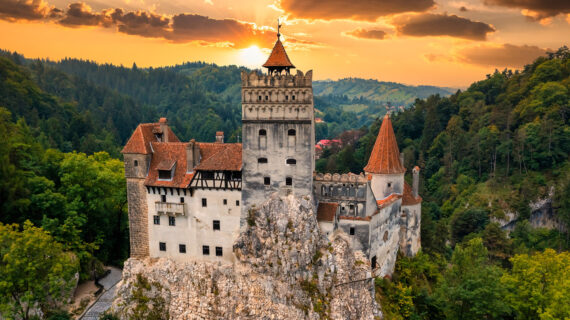

Follow Us